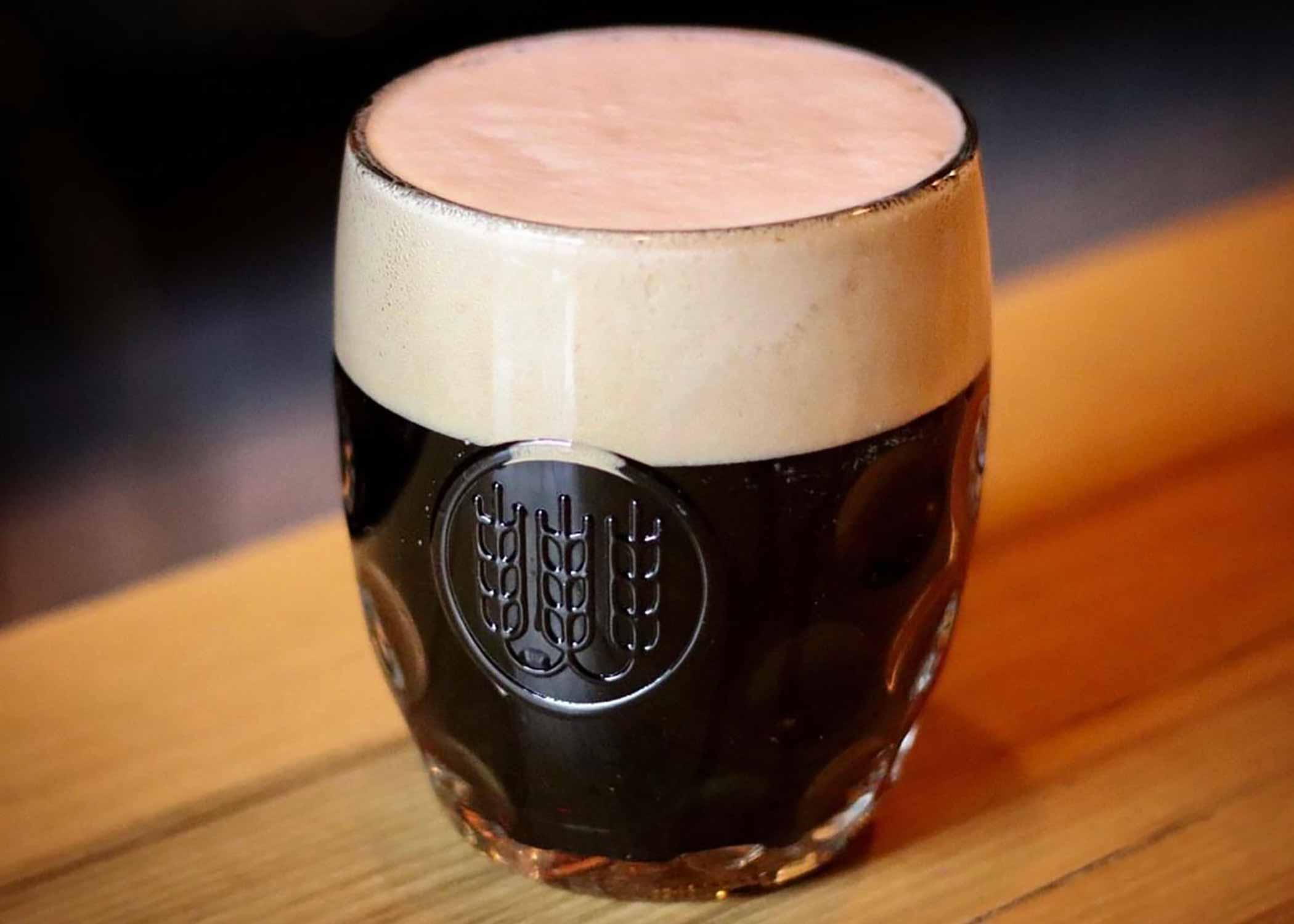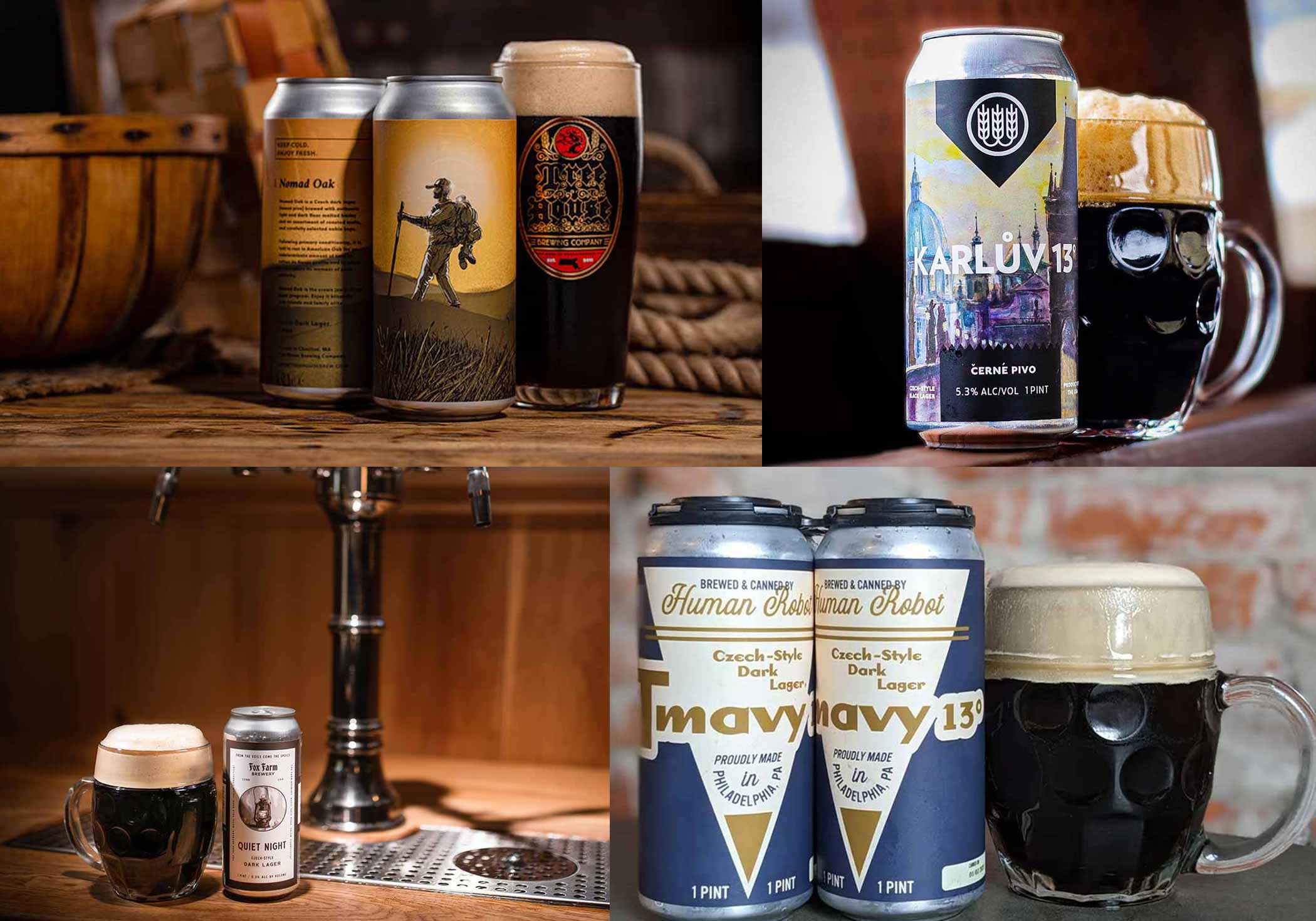Shop
Is It the Year of the Dark Lager?
Go over to the dark side!
Looking for More?
Look, sometimes, when you make a prediction, it’s spot on. Whoever said denim on denim would come back into style, good for you! Did you think Darth Vader was Luke’s Father? You’re intelligent. Mark Twain even predicted his own death. And Jules Verne, well, he was probably the GOAT at seeing the future—Twenty Thousand Leagues Under the Sea (1870), Around the World in Eighty Days (1872), and From the Earth to the Moon (1865)—submarines, flying, landing on the moon. Three for three.
But other times, you flop. C’mon, how many people have actually filled out a completely perfect March Madness bracket? Calling the Titanic an unsinkable ship…yeah. Who predicted Aaron Rogers would tear his Achilles just four plays into the Jets’ 2023 season?
Last year, we predicted it would be “The Year of the Czech Lager.” We’ll be the first to say we think we nailed that one.
This year, we went even farther out on a limb, forecasting this would be “The Year of the Dark Lager.” And while the jury is still out, we can’t say with any authority that this crystal-ball conclusion will come true.
Still, we wanted to poke the industry a little bit, getting down into the dirt with some top-notch dark lager brewers—Schilling Beer Co., Enegren Brewing, and Elsewhere Brewing—to hear any rumblings about whether our crazy forecast (for thunderstorms?) could be true.
What we found might not be considered earth-shattering…more like earth-rumblings, if you catch our drift.
From the devout dark lager devotees themselves, here are some of the top reasons to consider going over to the dark side…of lager.
First, What Do We Mean by Dark Lager?
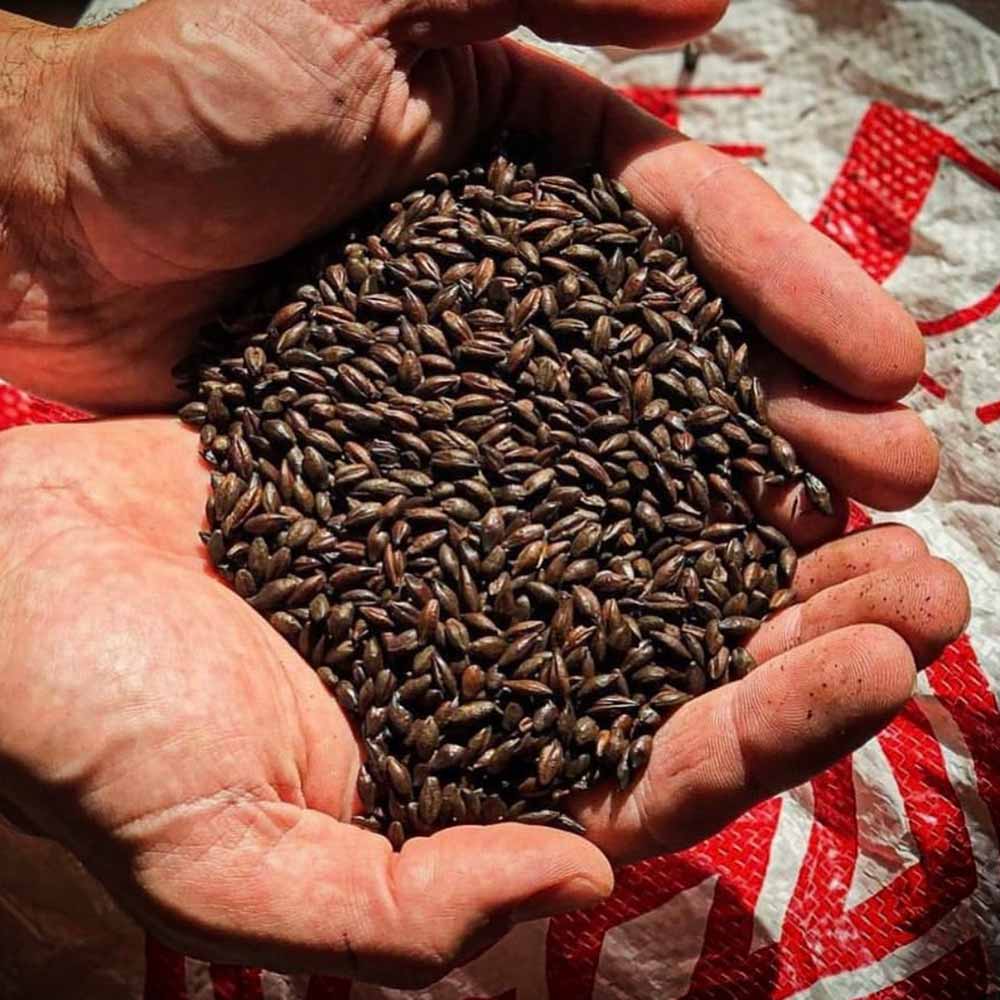
Photography courtesy of Zac Porter | Schilling Beer Co.
For the most part, we’re talking about these styles: Czech dark lager, schwarzbier, Baltic porter, bock, doppelbock, and Munich dunkel.
“I’d say schwarzbier and Czech-style dark lager (cerne pivo) would be the first things that jump out as dark lager beer,” says Ryan Murphy, lead brewer at Schilling Beer Co, renown for their excellent lagers—light and dark.
But there is some…gray area.
A style category on Untappd exists simply called “Lager – Dark,” which accounts for a darker and somewhat sweeter version of international pale lager with a little more body and flavor but equally restrained in bitterness. The low bitterness leaves the malt as the primary flavor element, and the low hop levels provide little balance.
So basically, dark lagers that fall outside the styles above (Baltic porter, doppelbock, Czech dark lager, schwarzbier, etc.).
Does a Czech Polotmavé amber lager count? Or do any amber lagers—Vienna, Märzen, rotbier, roggenbier, to name a few? To some.
What about the German Altbier, an amber beer that’s sort of between an ale and a lager?
I’ve even seen the term black pilsner thrown out there (probably another story in and of itself).
But for our purposes, we’re generally talking about those well-known truly dark (non-amber) styles mentioned above.
To significantly simplify things, we’re looking at beers with dark, sometimes roasted (but not always) malts, a lager yeast, and cold fermentation.
Got it? One more thing. And perhaps the most important.
Dark Lager Is Not a Stout! Or A Guinness!
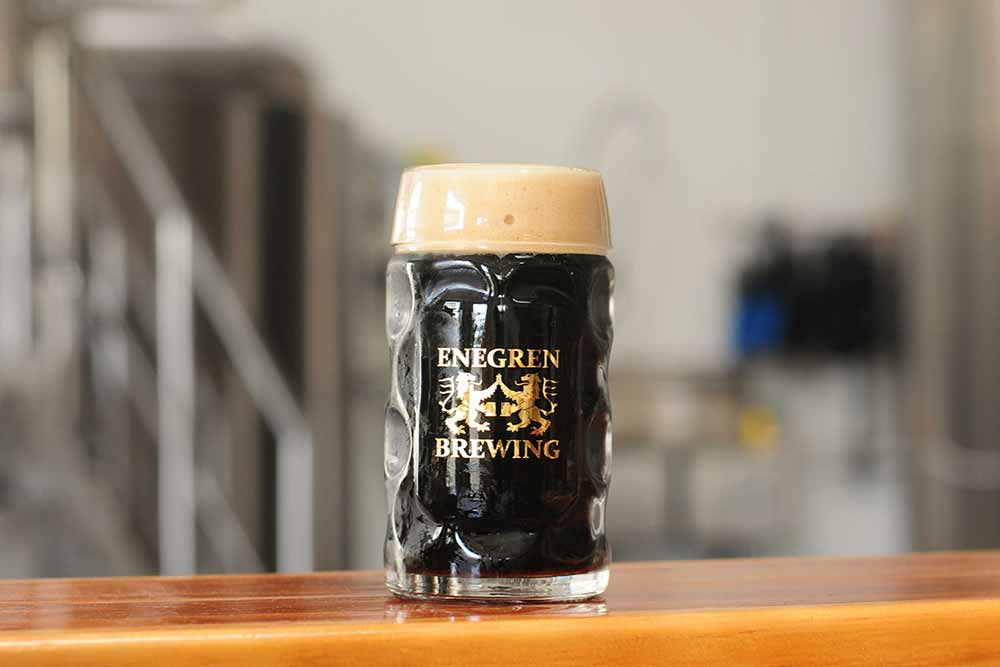
Photography courtesy of Enegren Brewing Company
Because of the color, one can commonly confuse dark lager with Guinness or even stouts in general.
“When people think of dark beer, they automatically think of stout,” says Robyn G. Weise, who has brewed around New York City and founded Kicks and Kegs. “That’s where the buck stops for a lot of people without understanding the types of [dark lager].”
Chris Enegren and John Bird, co-owners of Enegren Brewing Company, an all-lager brewery in Southern California, found this a standard misconception, with one beer to thank in particular.
“Guinness is the one everybody associates with dark beer,” says Bird. “And everybody also thinks that Guinness is a really heavy beer.”
Because it’s a stout—an Irish dry stout, specifically, which falls under ales.
“Guinness dominates the market for dark beer in the public consciousness in such a way that, for a lot of people, that may be the only dark beer they’ve ever had,” says Murphy.
Dark lager is not stout.
Elsewhere Brewing Co-Founders Sara and Sam Kazmer fell in love with Czech dark lager while traveling around the Czech Republic. When they opened their brewery, they went out on a limb, putting a flagship version on the menu called Gest.
Sara says when people come in saying they only drink dark, heavy stouts, “I say, listen, this is a dark beer, but it’s going to drink lighter because it’s a lager,” she explains. “They’re like, well, I don’t drink lagers, but I’m like, just give it a try. That’s what [Gest] does so beautifully. It changes people’s minds.
No matter what dark lager you’re drinking, the overall style should have one key component.
“My rendition of a ‘core’ dark lager revolves around ‘drinkability,’” says Elsewhere Director of Brewing Operations Josh Watterson, who drank his first dark lager at a cellar-turned-disco-bar in Prague in 2007. Watterson was on a weekend trip away from the World Brewing Academy in Munich. “I was on maybe my thirtieth pilsner in two days, and I just asked, ‘What else do you got?’” retells Watterson. “They had a dark lager known as tmavé pivo, or dark beer called Krušovice Černé, and it left an indelible mark on my soul. Since then, I will always reach for a dark lager when I see one.”
While Watterson admits he sometimes hates the word “drinkability,” it fits here. “I’m going for a balance and an exceedingly dry and crispy body,” he explains.
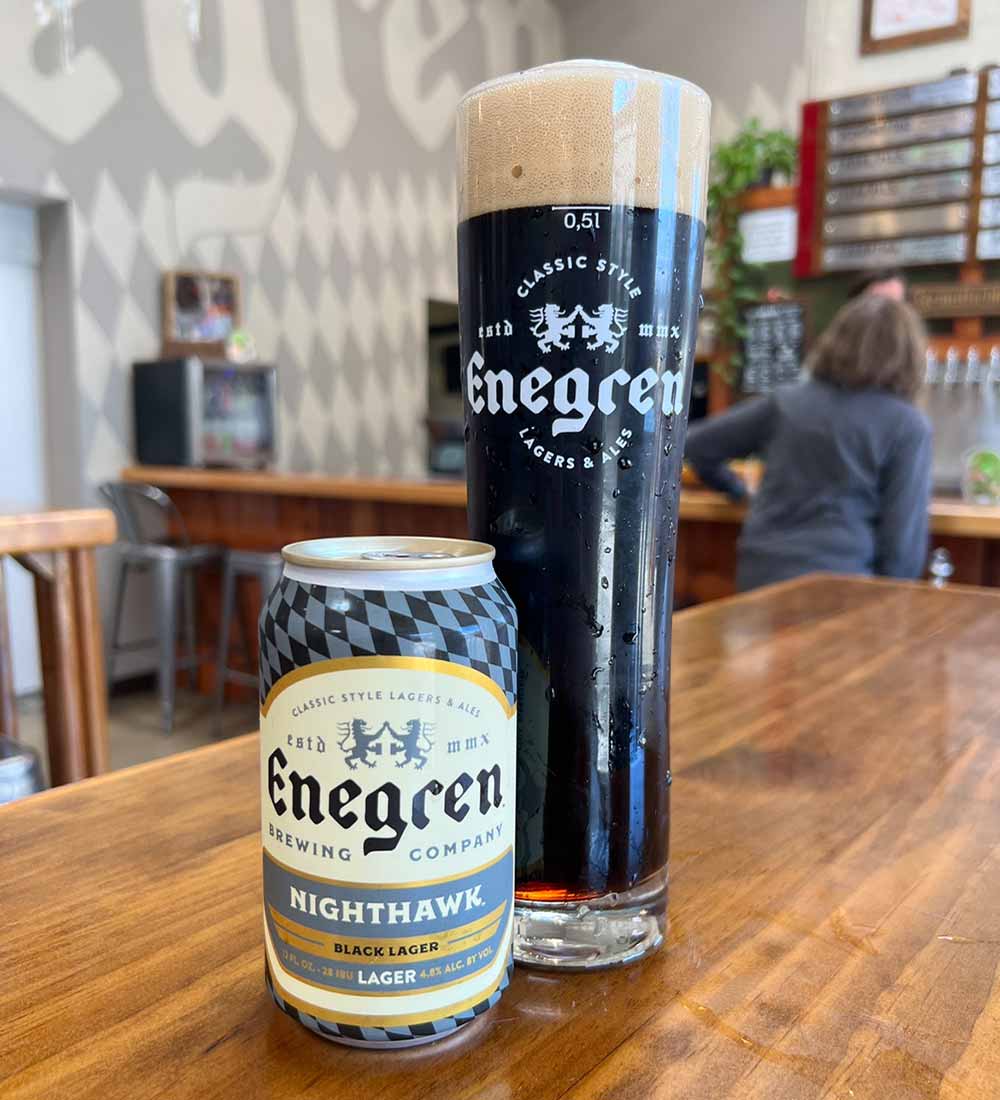
Photography courtesy of Enegren Brewing Company
Enegren makes several dark lagers, including a German-style schwarzbier called Nighthawk, a seasonal dunkel, and a Christmas bock.
“We’ll get people who say it’s too hot for Nighthawk,” says Chris. “But that’s my beach beer! It’s so refreshing and nice on a hot day. … It’s dark, but it’s designed for drinkability.”
Sara and Sam first experienced Czech dark lager on a hot day in the beer garden of Prague’s oldest brew pub, U Flecků. “We went to the tap room and were sitting out in the beer garden under big chestnut trees with an accordion [playing],” recounts Sam. “They have one beer, a Czech dark lager. We drank it, and it was like, ‘Why have we never seen this before?’”
Sara chimes in, “At first, we thought it was weird to drink dark beer on a hot day, but then we were like, whoa, this works really well!”
The best test for a dark lager, according to Bird? “Can you take that beer, put it in a liter mug, and be like, I want another one afterward?”
“It’s a paradox of sorts,” says Sam. “Dark beer that drinks like a light beer.”
Dark lagers aren’t heavy like an English barleywine. They’re not sticky like pastry stouts. They’re not hopped to high heaven like a black IPA.
But dark lagers are time-honored beers for a reason—built for crushability. If we paint with a reasonably broad brush, “German beers have been around for hundreds of years,” says Bird. “They’re the best styles out there, especially if you ask us.”
Which we will. But first…
Well, What Does the Data Say About Dark Lagers?
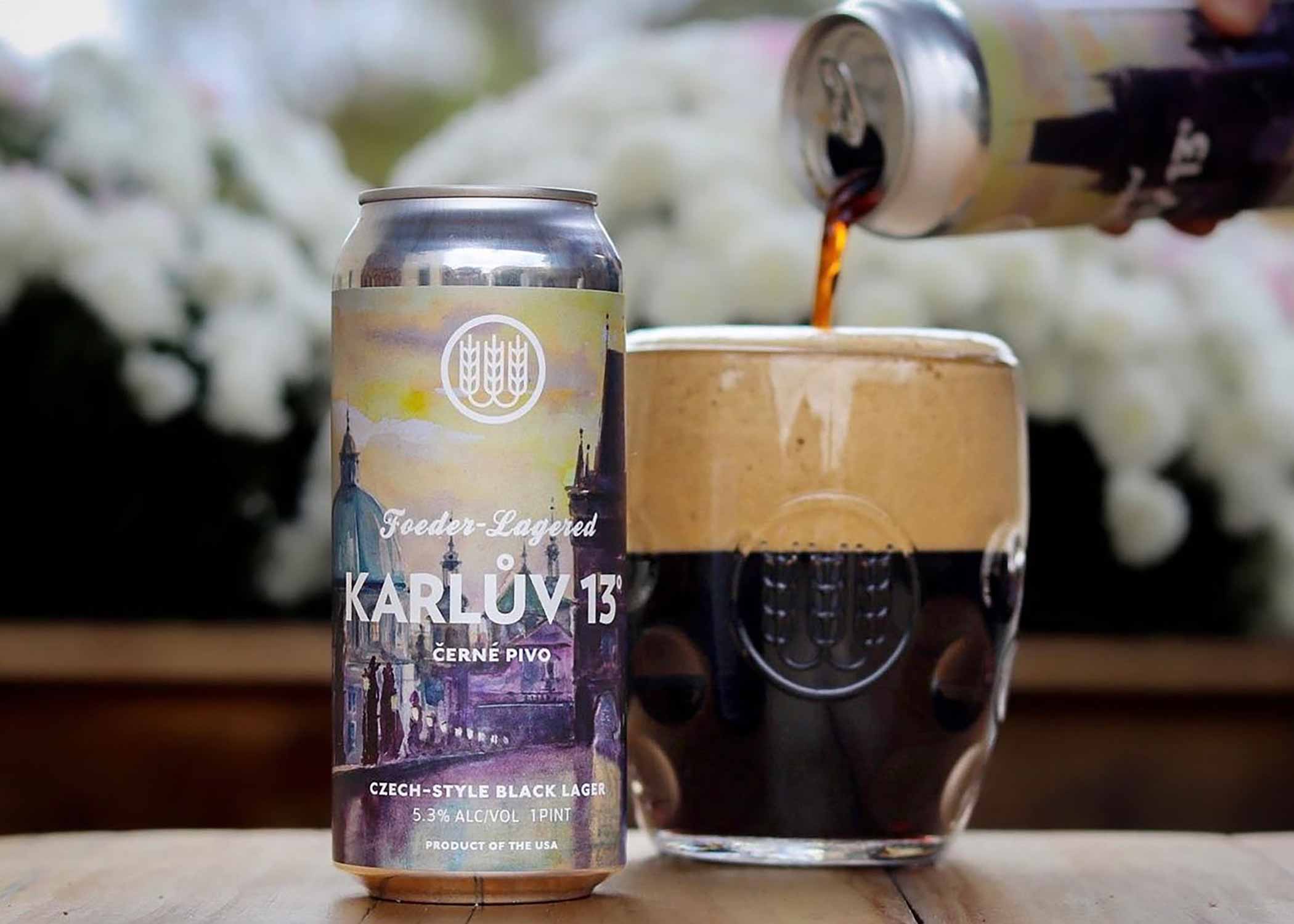
Photography courtesy of Zac Porter | Schilling Beer Co.
If we had just asked a Magic 8 Ball that question, the triangle that appeared from the murk might have been, ironically enough, “Reply hazy, try again.”
We tapped Untappd data here, gathering check-in information from 2020 to the present.
Overall, the ” Lager—Dark” category has grown albeit mildly, registering 284,187 check-ins in 2020 and 347,655 in 2023. The dark lager category with the highest number of check-ins in 2021 was Doppelbock (422,531), maintaining its crown through the past three years but dipping in total number last year (405,672).
Perhaps because Czech dark lager now shares some of the load. By far and away, the dark lager category with the most growth, Czech dark lager, rose from only 70,960 check-ins during 2020 to well over 108k in 2023. In fact, for 2021 and 2022, Czech dark lagers ranked lowest in Czech-ins (sorry, Freudian slip) amongst dark lager styles on the app. That lowly title went to imperial Baltic porters last year.
“I think Czech dark larger will be a big grower … because it has such wide appeal,” says Murphy. “But I would love to see more Altbier or Baltic porter, but I recognize those are more niche styles for sure.”
We also reached out to 3 Tier Beverages, a highly experienced team of Bev-Alc industry experts, servicing over 200 beer, wine, and spirits suppliers and distributors. Analyst Susan Wozniak pulled NIQ (formerly NielsenIQ) data for us that similarly painted a still slightly obscured picture. Wozniak wrote that dark lager saw slight increases in the last half year and the previous three months but losses again in the last four weeks.
She agrees that dark lager can be a murky category, as we discussed above, which could be part of the problem here.
She said many of these darker lagers could be scanning under a “Seasonal” category, which is harder to track. For what it’s worth, Murphy agrees that seasonality plays a huge factor with dark lager. “There’s no question it’s something consumers look for more often [in the winter],” says Murphy. “There’s definitely a lot of seasonality to it for sure.”
Empirically, we know there are many more versions of this style on the market, so part of the current problem might be that we don’t have a completely comprehensive way to track it yet.
With that in mind….
Forget the Data! What Do Brewers Say?
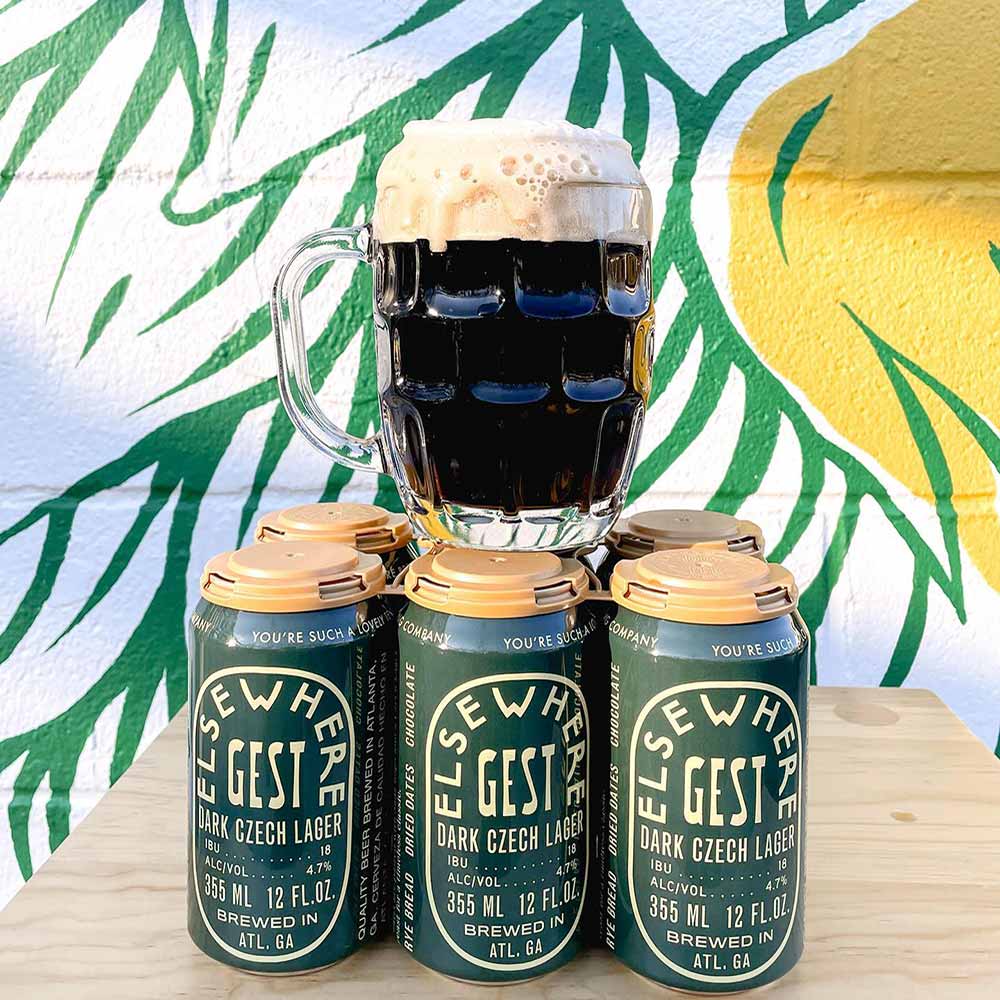
Elsewhere Brewing’s Czech dark lager, Gest, was inspired by Sam and Sara’s time in the Czech Republic | Photography courtesy of Elsewhere Brewing
Weise may not have any formal data, but she has eyes. Around the lockdown in 2020 and 2021, she noticed dark lagers popping up around Brooklyn. “I saw a brewery in Park Slope, and Gowanus had one, and then I saw a brewery across town in Bushwick, and Williamsburg had one on their menu,” she recalls. “In my matrix, I’ve seen it as a trend on the rise for a couple of years now.”
Weise compares the rise to trends in fashion. “You’ll see one person wearing this pair of sneakers with this cutoff jeans in Soho and then a couple of weeks later notice another person wearing something similar in Bushwick,” she says. “I feel like that’s how happened with beer as well—Philly, New York, beer cities like Chicago and Denver, people go to those beer destinations and see this brewery’s featuring lesser-known styles, and they’re talking about it and other brewers are visiting those places and bringing hose trends back to their smaller cities and smaller breweries and brewpubs.”
Watterson had similarly noticed what he calls a “big change,” indeed since he started running his own brewery departments in 2011 (when the landscape for lagers was what he calls “pretty barren”), but mainly he’s noticed an even more significant change from 2018 to today. “Seeing more breweries dip their toes into lagers inevitably leads them [to] trying to make dark lagers,” says Watterson, who always had his own year-round dark option at every brewery where he’s worked.
Across the country, Enegren didn’t always brew only lagers. In 2014, Chris went all IPA. He didn’t like IPA much, so he thought: Why do I need to brew it? Just because everyone else is? Although Enegren did make ales at the time, he got sick of trying to push his helles out at accounts when all anyone asked for was the hoppy stuff.
So, he decided he wouldn’t give beer buyers, distributors, and even drinkers the option anymore. “Do you have to sell IPA in California? Hell no!” Chris told me. “We’re going to go full Germany-style. We’re going to brew only what we like, only what we’re proud of.”
For the last ten years, Enegren has been touting its excellent lagers in a state known for its hoppy hangover.
Bird admits that it has been a slow growth. “Lagers only became cool like four years ago,” he shares. “Everybody starts with an IPA … but after a few years of IPA, they start trying other things.”
Like Enegren’s aforementioned black lager Nighthawk. “People now are like, I didn’t know something could be that light and smooth,” says Bird. “They get the flavor from drinking a stout, but they’re going to have four of those, whereas they’ll only have one stout.”
Today, according to Bird, the German schwarzbier has a cult following. “The places that have it on tap run through that beer,” he says.
While Nighthawk soars off-premise, Bird says that on-premise, when the seasonal dunkel comes on, “that just crushes!”
Slowly, it seems like Enegren’s pushing-all-chips-into-the-middle-of-the-poker-table gamble paid off.
Similarly, Elsewhere felt like they gambled, opening with a flagship dark lager. “We weren’t sure how it would sell or if it would hit,” says Sara.
Today, Gest is one of Elsewhere’s best-selling beers. As Sara mentioned, it’s the kind of Czech dark lager that can change people’s perceptions of dark beer.
And a more significant turnaround in American consumers’ thoughts toward lagers in general.
Pale Lager Dominates, Dark Lager to Follow?
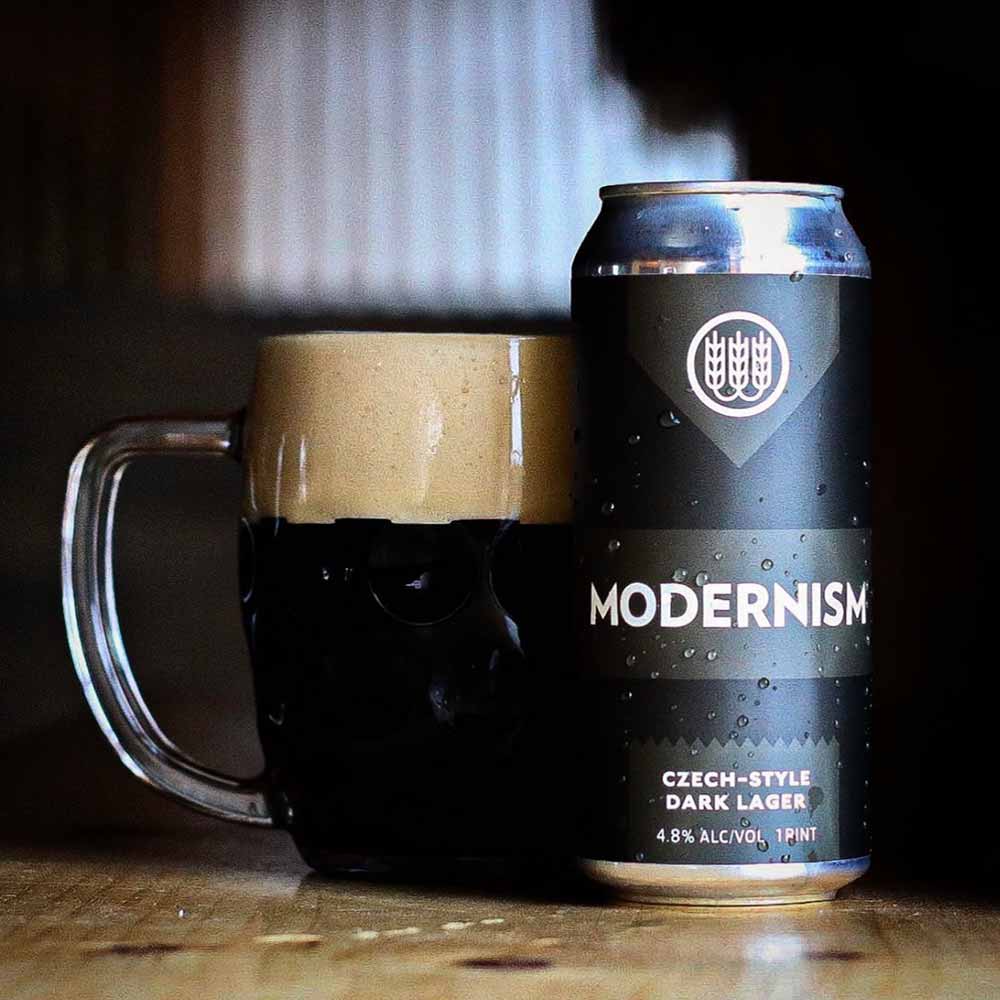
Photography courtesy of Zac Porter | Schilling Beer Co.

Photography courtesy of Zac Porter | Schilling Beer Co.
Chris quickly points out to me that, in reality, lager (albeit mostly of the pale variety) is the most popular style in the world. Only in America did the word lager become “synonymous to shitty beer,” he says.
Today, more and more craft breweries have reinvented lager’s image, starting with the basics: pilsner and perhaps a helles.
“I think a lot of breweries got their foot in the door with lagers, starting with pilsners,” says Chris. “All right, cool. People understand that we can make lagers,” which gives them the confidence to dip into the dark pool.
Slowly but surely, the waters are getting darker.
Murphy agrees, saying, “Five or six years ago, a lot of breweries tried their hand at lagers in general, and they always started with a pilsner, a helles, or something pale that’s really approachable.”
With way more breweries making pale lager and investing in lager yeast, Murphy says exploring dark lager became the next practical and experimental step. “You’ve got your lager yeast in-house, and the season starts to get a little bit cooler,” he says. “Now, all of a sudden, you have a lot of breweries who are like, well, look, I’ve got this yeast going; my pale lager might be flagging a little in sales; this is an opportunity for me to make that dunkel or schwarzbier.”
At Schilling, Murphy says their Czech dark lager, Modernism, is their top-selling dark lager with a sales volume around four times more than other dark lagers in their portfolio.
“I think [dark lagers] have grown in popularity,” says Murphy. “It’s just a natural progression of more craft consumers drinking lager that starts pale and then learning about the massive amount of flavors that are available within lager, as opposed to just thinking of it as German pilsner or Czech pilsner, realizing that, oh, a schwarzbier is a lager; oh, a Czech dark lager is another version that I can have that has a totally different flavor component.”
The Great Dark Lager Test
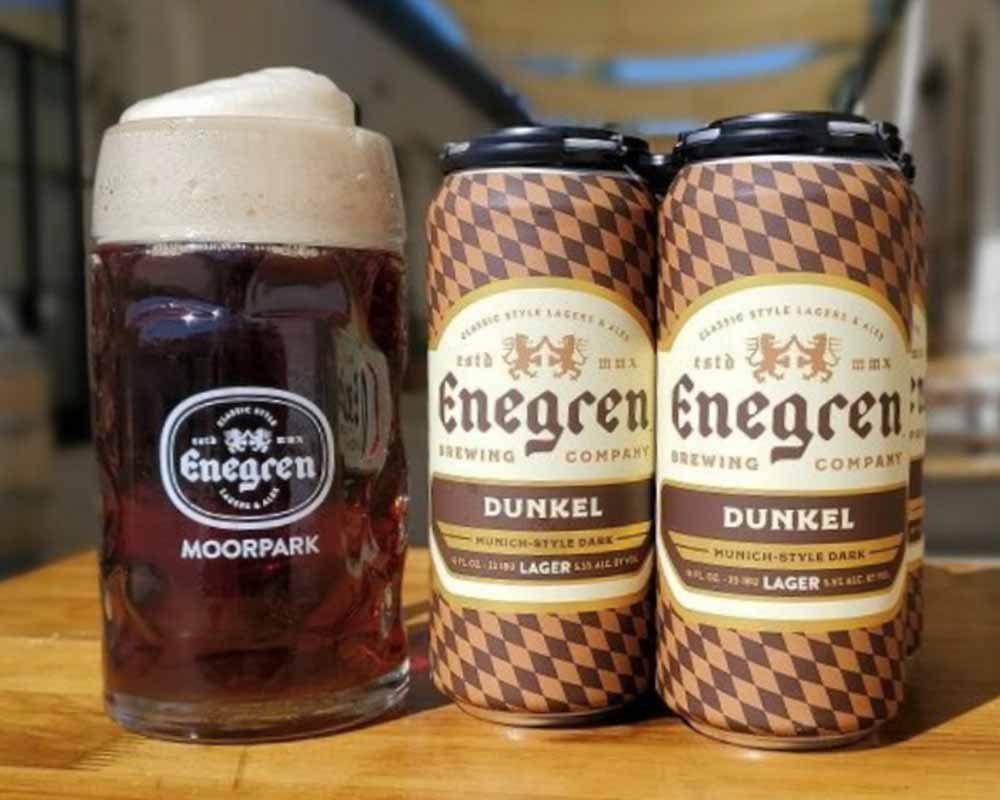
Photography courtesy of Enegren Brewing Company
At Enegren, Chris says he and Bird made a promise when they went all-lager. “When lager stops selling, John and I get different jobs,” he laughs.
After almost a decade, Enegren is still just cranking out lager beer. And by now, customers have become way more intimately familiar with pale and dark ones, “Now, if we put that lager name on a dark beer, they’re going to kind of get that it’s not a big beer,” Chris says.
Murphy adamantly believes the ultimate test of growth for dark beer falls on brewers. “It’s incumbent on us as [producers] to make sure we’re producing quality versions,” he says. “For a lot of people, they may be trying their first-ever Altbier, doppelbock, or Baltic porter, and it’s important for us as brewers to continue to grow this industry to represent those styles as well as we possibly can.”
Murphy has some sound encouragement for consumers, too: Keep an open mind and explore the dark lager seas.
“This isn’t doctor-approved advice, but I think the best thing you can do is drink as many [dark lagers] as possible from well-known breweries that distribute internationally,” says Murphy. “Dark lager is exciting because it’s a continuous exploration. … Drink as many of those as you can!”
Bird agrees. “I think that just to reiterate something that we all know, people need to try more dark lagers and understand what they’re about,” he says. “Find the good ones and give them a shot!”
A Few Top-Notch Dark Lagers to Try Right Now
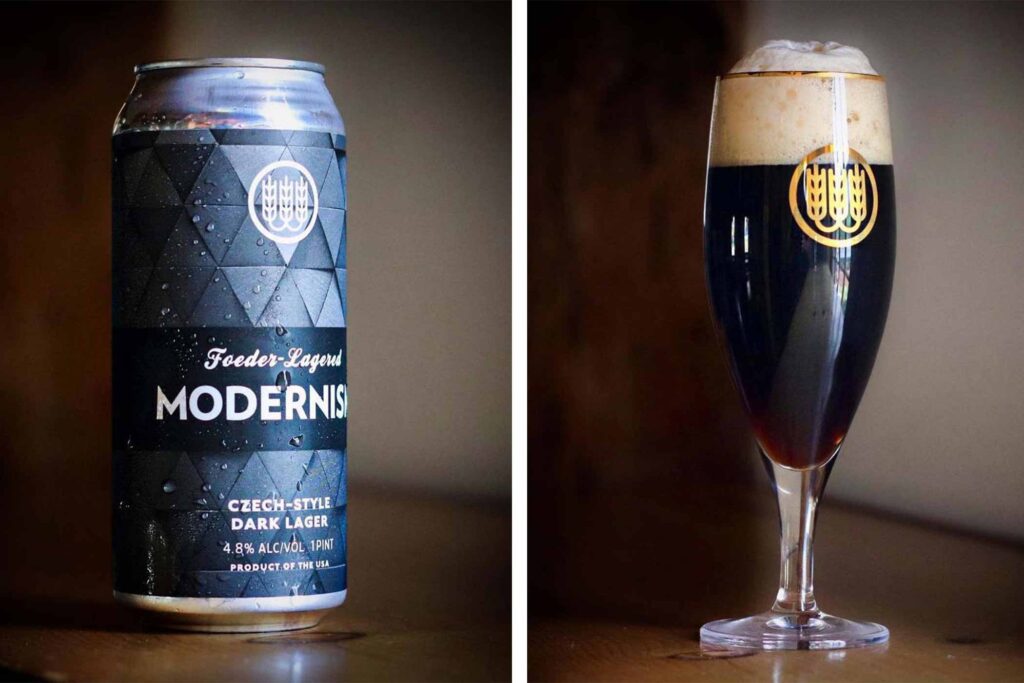
Photography courtesy of Zac Porter | Schilling Beer Co.
Modernism — Schilling Beer Co.
Littleton, NH
Czech Dark Lager – A fantastic representation of a Czech dark lager (or tmavé pivo), Modernism starts with a base of Bohemian Pilsner and Munich malt before an addition of a few different black malts that “will minimize how much roast character is imparted, so it stays fairly roast neutral but gets a lot of color,” explains Murphy.
Leveraging a single decoction, Murphy says this beer starts at 12 Plato before fermenting down to about 2.6 Plato. “So it gets fairly dry,” says Murphy. “It’s a typical Czech lager that has a great neutral yeast aroma, very minimal hop character. … So it’s a very clean, easy-drinking beer with what I would call a light to medium mouthfeel.”
Modernism isn’t a big, robust beer because of those dark malts. Rather, they provide color, presence, and body.
“That’s why it’s such an easy beer to sell to people, because it’s not pushing anything in one big direction,” says Murphy. It doesn’t have a big hop character, a big bitterness, a big roast character, or a big chocolate character. It’s kind of an easy-drinking beer that appeals to a pretty wide range of people.”
Nighthawk — Enegren Brewing Company
Moorpark, CA
Schwarzbier – Landing at only 4.8% ABV, Nighthawk has a super light body and a great lighter coffee flavor. Named after the term Chris and his brother used to have for when they’d stay up all night brewing (“Operation Nighthawk”), this schwarzbier is genuinely a beer you could drink a few of late into the night and still feel fine the following day.
“This beer is refreshing, dark, and good on a hot day,” says Chris. Once people try it and [understand] it’s not going to taste like Guinness or a thick roasted stout, then they see that dark lager, especially German dark lager, is designed for drinkability, and that’s a great thing!”
For transparency, Chris and John did send us some Nighthawk to try ourselves. It’s incredible: smooth, almost velvety, but with a nice snappy chocolatey bite that brings you back around to go in for the next sip. I drank one while writing this piece and found my glass emptier quicker than expected.
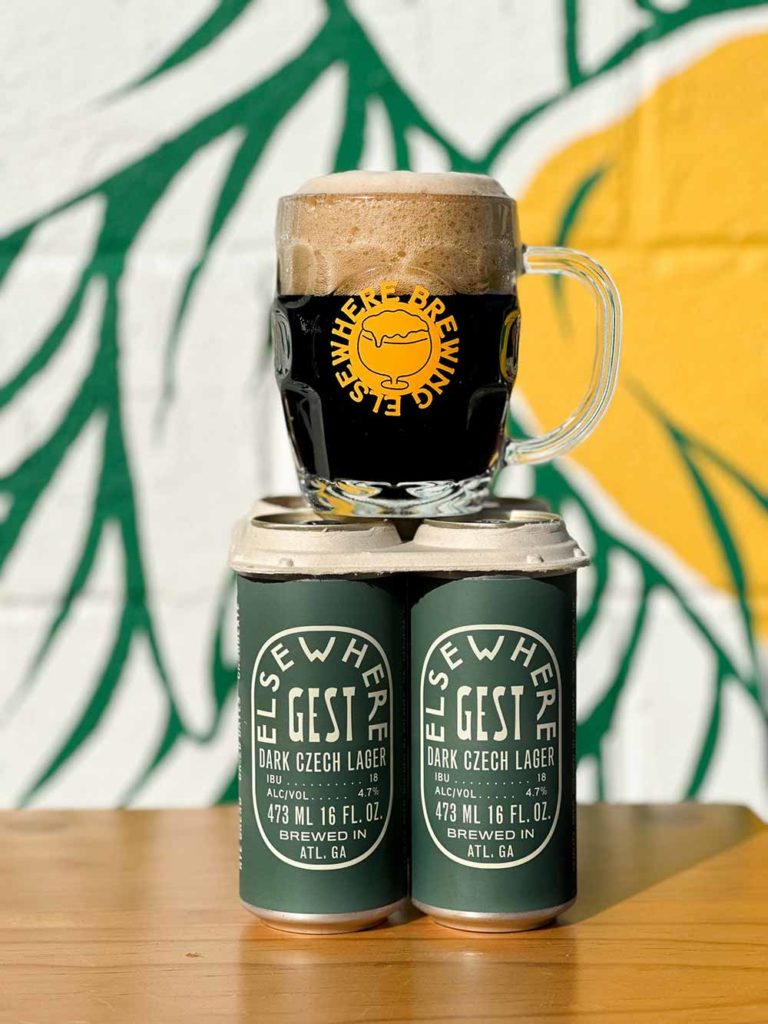
Photography courtesy of Elsewhere Brewing
Gest — Elsewhere Brewing Company
Atlanta, GA
Czech Dark Lager – Elsewhere’s top-selling flagship is actually quite simple, according to Director of Brewing Operations Watterson. “95% Pilsner malt, 5% malted wheat, Staropramen yeast, Saaz hops, and debittered black malt,” he explains.
Watterson says Gest mashes in like a pilsner with just the Pilsner malt and malted wheat, but toward the end of the mash cycle, he starts to Vorlauf, “which is essentially a clarifying process,” he says, before milling in that debittered black malt.
You may be asking yourself: What is debittered black malt? “Well, it’s a huskless barley or wheat as roasting the hulls/husks creates astringency,” says Watterson. “These grains are black in color but taste rather delicate, like a nice dark chocolate. These will then leach their color into the mash and turn the straw yellow wort darker and darker until it is almost black.”
Seems like the best of both worlds. However, Watterson notes that you must diligently watch the mash at this point because if you start transferring the wort to the kettle too early, you’ll end up with a brown beer instead of that authentic Czech dark lager you want. And if you transfer too late, you’ll get too much roast character.
After a seventy-five-minute boil, Watterson adds Saaz hops in bittering, flavor, and aroma additions, and he ferments with a Staropramen Brewery Czech lager yeast for somewhere between seven to eight weeks.
“I always say the ingredients of beer are not malt, hops, water, yeast; it’s malt, hops, water, yeast, and time,” says Watterson. “Conditioning and maturation are key to creating a beer I want to drink.”
And after time and filtering, Gest is ready to drink!
If you’re lucky enough to visit Elsewhere in person, Gest is served off a side-pull LUKR faucet.
“A dense brown two-finger head jiggles slightly as it hits your table,” says Watterson. “The notes of light chocolate and bread dough waft slightly off the glass. As you take your first sip, the tight carbonation bites your tongue, showcasing one of the quintessential aspects of any of Elsewhere’s beers … the dryness.”
He adds, “I love sugar, but on my pancakes, not in my beer.
At Elsewhere, Watterson says they call Gest “a deception in a glass because although it looks dark, it drinks light,” he explains. “The notes of fig, caramel-like cola flavor, and a hint of bittersweet chocolate will touch but not linger on the palate, forcing you to taste again and again.”
I’ve been lucky enough to drink Gest fresh at the Atlanta-based taproom and from the can at home, so I can attest to everything Watterson has said. This Czech dark lager is an excellent beer; whether you’re just getting into dark lagers or already a fan—it’s a game-changer.
Köstritzer Schwarzbier — Köstritzer Schwarzbierbrauerei
Bad Köstritz, Thüringen, Germany
Schwarzbier – From our conversations, it seems like Köstritzer is an OG schwarzbier. Although actually a subsidiary of Bitburger Brauerei, Köstritzer Schwarzbierbrauerei makes a dark lager that both Weise and Murphy referenced during our conversations.
Weise says this was the first beer that turned her attention to dark lager. Five or six years ago, while working at the now-closed Prospect Heights Beer Works, she says an older gentleman came in several times asking if they had Köstritzer. Because it came from a “macrobrewery,” they could order it easily for him. “We sat on that case as long as it took this guy to get through a six-pack a week,” she laughs, illustrating the place of dark lager in America at the time. But she still remembers that beer to this day.
Similarly, Murphy says that, although everyone has heard of Guinness, very few know Köstritzer, “even though it’s a huge market volume,” he explains. “Köstritzer is a fantastic schwarzbier, and you may think of it as a large, macro beer in a lot of ways, but it’s also in many ways a style-defining beer because, for almost one hundred percent of consumers, it’s going to be the only schwarzbier that their local craft brewery doesn’t make.”
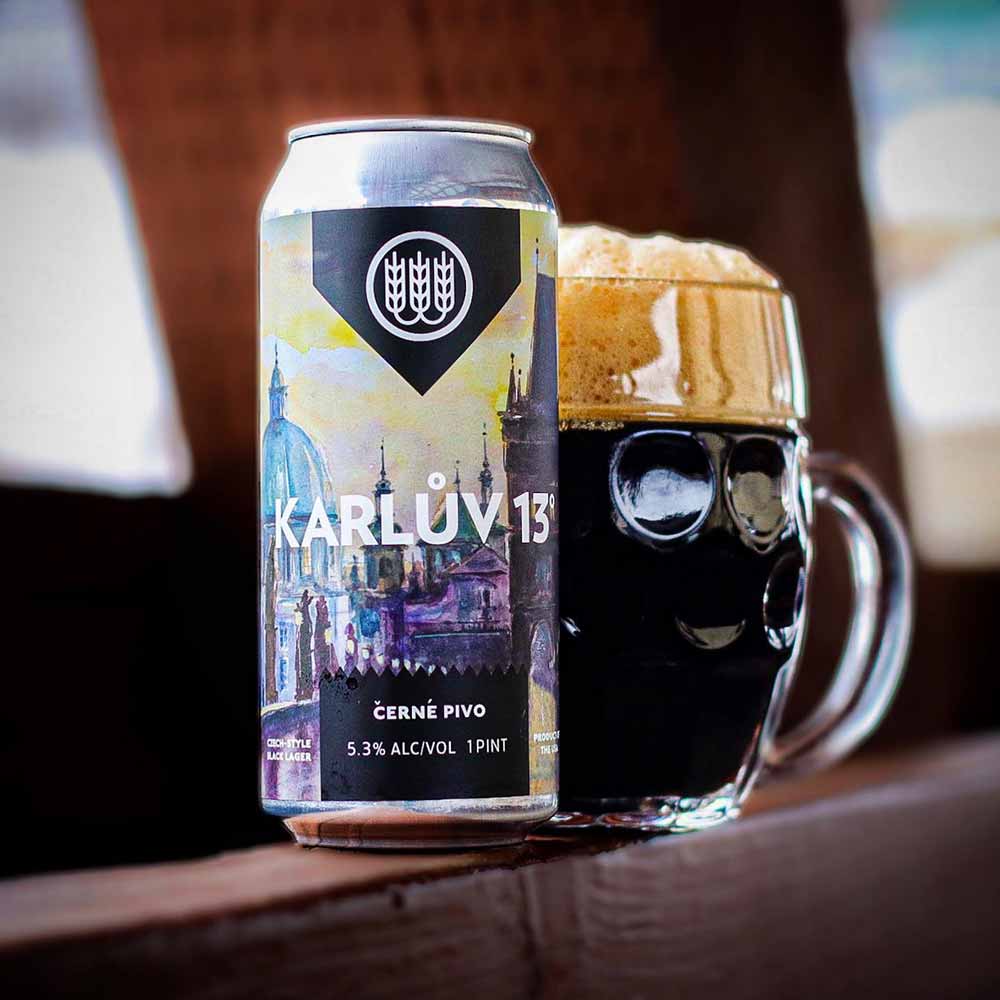
Photography courtesy of Zac Porter | Schilling Beer Co.
Karlův 13° — Schilling Beer Co.
Littleton, NH
Czech Dark Lager – Another Czech black lager in Schilling’s portfolio, and one of our personal favorites, Karlův 13° hits a little higher in ABV and finishing gravity, “so it does have a little bit more of that robust mouthfeel,” says Murphy. “It’s got a bit more noticeable roast and bread characters.”
A seasonal beer available only from December through March, Karlův 13°, like Modernism, isn’t driven by hop aroma or flavor but rather a dry finish from the dark malt. “That’s a fantastic beer,” says Murphy. I think it’s a great gateway to dark lagers for that stout drinker or that porter drinker because it merges the flavor palates between Czech dark lager and that more robust beer that some people are accustomed to.”
Munich Dunkel — Enegren Brewing Company
Moorpark, CA
Munich Dunkel – “A real dunkel has to be dark, it’s got to have that nice malt background, that toasted bread, but it has to be a beer you can have in a litre mug,” says Chris. “If you cannot do that, you didn’t make a dunkel.”
So, we put Enegren’s Munich Dunkel to the test.
While we didn’t have a liter mug on hand, we did drink two 16oz cans while editing this story (which took place on a different day than when we wrote this story for all of you keeping tabs from the Nighthawk I drank above!); 1 litre = 33.8 fl oz; you do the math!
According to Enegren, its version of this dark German lager “is one of the maltiest and smoothest beers we’ve ever brewed.” Made with German Munich, Melanoidin, and debittered chocolate malts, Dunkel warmed us like a fresh brown sugar oatmeal raisin cookie right out of the oven, all lightly toasted and slightly sweet. A hint of brisk, honeyed biscuit gives the palate that tantalizing dryness right at the end to make you immediately reach for your mug to take another sip.
Dark Lager — Sacred Profane
Biddeford, ME
Czech Dark Lager – One of only two beers served at Sacred Profane, Dark Lager has made quite an impression on those who’ve had it.
“I’ve only tried it once, and probably everyone will mention it because it is so famous and the brewer is phenomenal, but that Sacred Profane dark beer was fire,” says Weise. “I don’t need to give any notes; that beer was frickin’ amazing. I wish that I had made it!”
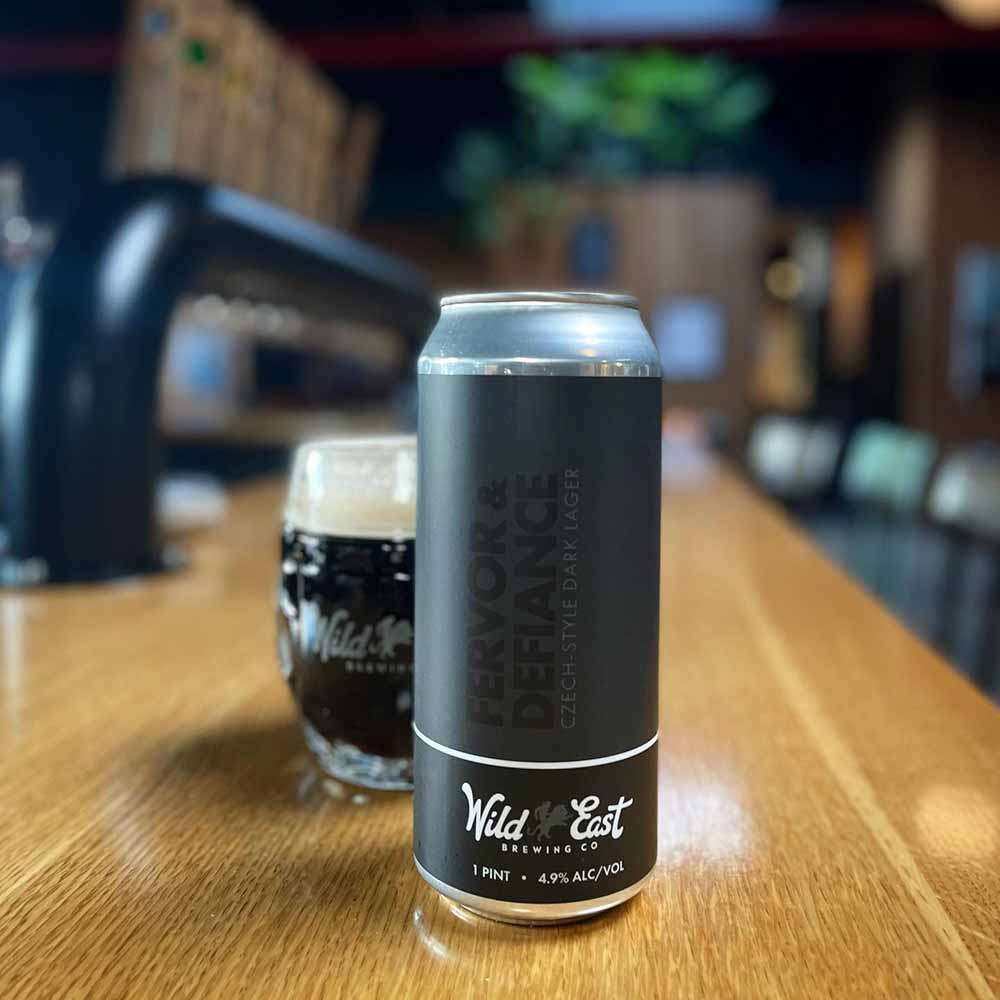
Photography courtesy of @wildeastbrewing
Fervor & Defiance — Wild East Brewing Company
Brooklyn, NY
Czech Dark Lager – For Weise, one of the first dark lagers that made her go, “Oh, this is cool; this is different,” was Fervor & Defiance from Wild East in Brooklyn.
When our freelancer Andy Crump wrote a primer on all things Czech dark lager, he profiled this beer, saying, “If ‘balance in all things’ is Czech dark’s ethos, then an excellent Czech dark has to reward that balance with complex nuance in the finished beer. Wild East’s presentation of the style, [Fervor & Defiance] clearly … expresses the beer’s classic traits: A touch of sweetness, a touch of roast, and a well-rounded body. But on the palate, expect a parade of floral spice that complements those elements, never fighting against them for a moment. Fervor & Defiance is an exercise in harmony, patiently brewed and worth all Wild East’s effort.”
Volition — Threes Brewing
Brooklyn, NY
Schwarzbier – Another suggestion from Weise, Threes Volition, “is lovely; it’s … a really dope dark lager that’s super clean,” she says. “You get that malt, but it’s not overwhelming; it’s just enough to give that caramelization on the palate.”
Foeder-Lagered Rügen — Schilling Beer Co.
Littleton, NH
Baltic Porter – To showcase the breadth of Schilling’s dark lagers, Foeder-Lagered Rügen is a 9% ABV Baltic porter with a considerable amount of Munich Malt Type Two. “It’s got a big nose of toasted bread and some caramel malts that kind of bring up that body and sweetness a little bit,” says Murphy. “And it also has a tiny bit of smoked malt in it. It’s really just an accent. It’s not a smoky beer, but there’s definitely, like, hints of it in the aroma and the flavor.”
Because this beer has a big finish in gravity and alcohol content, Murphy recommends this dark lager for stout and porter drinkers because it has more of those similar, prominent characteristics.

